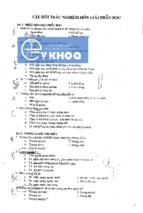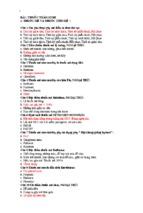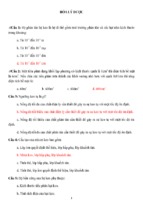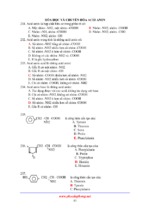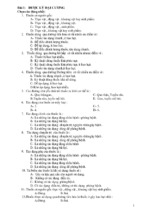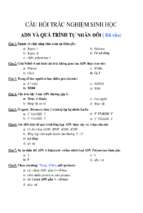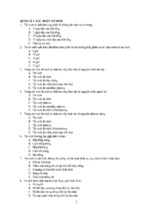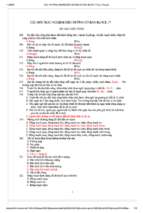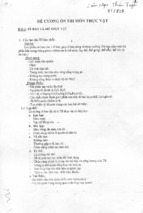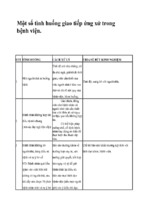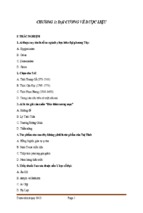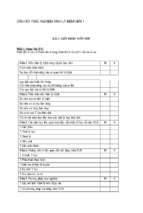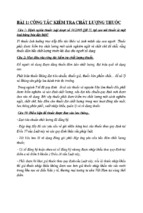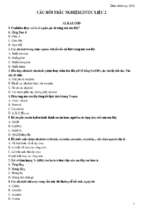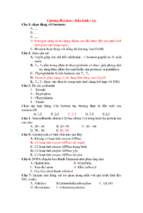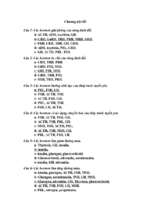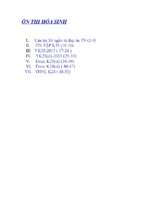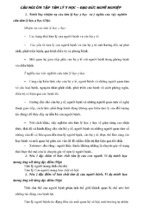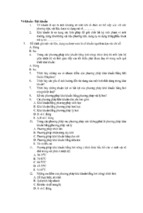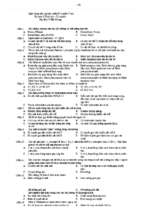Anatomy at a Glance
Omar Faiz
David Moffat
Blackwell Science
Anatomy at a Glance
OMAR FAIZ
BSc (Hons), FRCS (Eng)
Specialist Registrar in General Surgery
DAVID MOFFAT
VRD, MD, FRCS
Emeritus Professor of Anatomy
University of Cardiff
Blackwell
Science
© 2002 by Blackwell Science Ltd
a Blackwell Publishing company
Editorial Offices:
Osney Mead, Oxford OX2 0EL, UK
Tel: +44 (0)1865 206206
Blackwell Science, Inc., 350 Main Street, Malden, MA 02148-5018, USA
Tel: +1 781 388 8250
Blackwell Science Asia Pty, 54 University Street, Carlton, Victoria 3053, Australia
Tel: +61 (0)3 9347 0300
Blackwell Wissenschafts Verlag, Kurfürstendamm 57, 10707 Berlin, Germany
Tel: +49 (0)30 32 79 060
The right of the Authors to be identified as the Authors of this Work has been asserted in accordance
with the Copyright, Designs and Patents Act 1988.
All rights reserved. No part of this publication may be reproduced, stored in a retrieval system, or
transmitted, in any form or by any means, electronic, mechanical, photocopying, recording or
otherwise, except as permitted by the UK Copyright, Designs and Patents Act 1988, without the prior
permission of the publisher.
First published 2002 by Blackwell Science Ltd
Reprinted 2002
Library of Congress Cataloging-in-Publication Data
Faiz, Omar.
Anatomy at a glance / Omar Faiz, David Moffat
p.
cm.
Includes index.
ISBN 0-632-05934-6 (pbk.)
1. Human anatomy—Outlines, syllabi, etc. I. Moffat, David, MD. II. Title.
[DNLM: 1: Anatomy. QS 4 F175a 2002]
QM31 .F33 2002
611—dc21
2001052646
ISBN 0-632-05934-6
A Catalogue record for this title is available from the British Library.
Set in 9/11A pt Times by Graphicraft Limited, Hong Kong
Printed and bound in Italy by G. Canale & C. SpA, Turin
For further information on
Blackwell Science, visit our website:
www.blackwell-science.com
Contents
Preface, 5
The thorax
1 The thoracic wall I, 6
2 The thoracic wall II, 8
3 The mediastinum Iathe contents of the
mediastinum, 10
4 The mediastinum IIathe vessels of the thorax, 12
5 The pleura and airways, 14
6 The lungs, 16
7 The heart I, 18
8 The heart II, 22
9 The nerves of the thorax, 24
10 Surface anatomy of the thorax, 26
11
12
13
14
15
16
17
18
19
20
21
22
23
24
25
26
The abdomen and pelvis
The abdominal wall, 28
The arteries of the abdomen, 31
The veins and lymphatics of the abdomen, 34
The peritoneum, 36
The upper gastrointestinal tract I, 38
The upper gastrointestinal tract II, 40
The lower gastrointestinal tract, 42
The liver, gall-bladder and biliary tree, 44
The pancreas and spleen, 46
The posterior abdominal wall, 48
The nerves of the abdomen, 50
Surface anatomy of the abdomen, 52
The pelvis Iathe bony and ligamentous pelvis, 54
The pelvis IIathe contents of the pelvis, 56
The perineum, 58
The pelvic viscera, 60
The upper limb
27 The osteology of the upper limb, 62
28 Arteries of the upper limb, 66
29 The venous and lymphatic drainage of the upper limb and the
breast, 68
30 Nerves of the upper limb I, 70
31 Nerves of the upper limb II, 72
32 The pectoral and scapular regions, 74
33 The axilla, 76
34 The shoulder (gleno-humeral) joint, 78
35 The arm, 80
36 The elbow joint and cubital fossa, 82
37 The forearm, 84
38 The carpal tunnel and joints of the wrist and hand, 86
39 The hand, 88
40 Surface anatomy of the upper limb, 90
41
42
43
44
45
46
47
48
49
50
51
52
The lower limb
The osteology of the lower limb, 92
The arteries of the lower limb, 94
The veins and lymphatics of the lower limb, 96
The nerves of the lower limb I, 98
The nerves of the lower limb II, 100
The hip joint and gluteal region, 102
The thigh, 106
The knee joint and popliteal fossa, 109
The leg, 112
The ankle and foot I, 114
The ankle and foot II, 116
Surface anatomy of the lower limb, 118
The autonomic nervous system
53 The autonomic nervous system, 120
54
55
56
57
58
59
60
61
62
63
64
65
66
67
68
69
70
The head and neck
The skull I, 122
The skull II, 124
Spinal nerves and cranial nerves I–IV, 126
The trigeminal nerve (V), 128
Cranial nerves VI–XII, 130
The arteries I, 132
The arteries II and the veins, 134
Anterior and posterior triangles, 136
The pharynx and larynx, 138
The root of the neck, 140
The oesophagus and trachea and the thyroid gland, 142
The upper part of the neck and the submandibular
region, 144
The mouth, palate and nose, 146
The face and scalp, 148
The cranial cavity, 152
The orbit and eyeball, 154
The ear, and lymphatics and surface anatomy of the head and
neck, 156
The spine and spinal cord
71 The spine, 158
72 The spinal cord, 160
Muscle index, 162
Index, 168
Contents 3
Preface
The study of anatomy has changed enormously in the last few decades.
No longer do medical students have to spend long hours in the dissecting room searching fruitlessly for the otic ganglion or tracing the small
arteries that form the anastomosis round the elbow joint. They now
need to know only the basic essentials of anatomy with particular
emphasis on their clinical relevance and this is a change that is long
overdue. However, students still have examinations to pass and in this
book the authors, a surgeon and an anatomist, have tried to provide a
means of rapid revision without any frills. To this end, the book follows
the standard format of the at a Glance series and is arranged in short,
easily digested chapters, written largely in note form, with the appropriate illustrations on the facing page. Where necessary, clinical applications are included in italics and there are a number of clinical
illustrations. We thus hope that this book will be helpful in revising and
consolidating the knowledge that has been gained from the dissecting
room and from more detailed and explanatory textbooks.
The anatomical drawings are the work of Jane Fallows, with help
from Roger Hulley, who has transformed our rough sketches into the
finished pages of illustrations that form such an important part of the
book and we should like to thank her for her patience and skill in carrying out this onerous task. Some of the drawings have been borrowed or
adapted from Professor Harold Ellis’s superb book Clinical Anatomy
(9th edn) and we are most grateful to him for his permission to do this.
We should also like to thank Dr Mike Benjamin of Cardiff University
for the surface anatomy photographs. Finally, it is a pleasure to thank
all the staff at Blackwell Science who have had a hand in the preparation of this book, particularly Fiona Goodgame and Jonathan Rowley.
Omar Faiz
David Moffat
Preface 5
1 The thoracic wall I
Thoracic outlet (inlet)
First rib
Clavicle
Suprasternal notch
Manubrium
Third rib
5
2
1
Body of sternum
Intercostal
space
4
Xiphisternum
Scalenus
anterior
Costal cartilage
Brachial
plexus
Cervical
rib
Costal margin
3
1
2
3
4
5
Floating ribs
Costochondral joint
Sternocostal joint
Interchondral joint
Xiphisternal joint
Manubriosternal joint
(angle of Louis)
Subclavian
artery
Fig.1.3
Bilateral cervical ribs.
On the right side the brachial plexus
is shown arching over the rib and
stretching its lowest trunk
Fig.1.1
The thoracic cage. The outlet (inlet)
of the thorax is outlined
Transverse process with
facet for rib tubercle
Demifacet for head of rib
Head
Neck
Facet for
vertebral body
Costovertebral
joint
Tubercle
T5
T6
Costotransverse
joint
Sternocostal
joint
Shaft
Fig.1.2
A typical rib
6 Thorax
Angle
Subcostal groove
6th
rib
Costochondral
joint
Fig.1.4
Joints of the thoracic cage
The thoracic cage
The thoracic cage is formed by the sternum and costal cartilages in
front, the vertebral column behind and the ribs and intercostal spaces
laterally.
It is separated from the abdominal cavity by the diaphragm and communicates superiorly with the root of the neck through the thoracic
inlet (Fig. 1.1).
• The 2nd rib is less curved and longer than the 1st rib.
• The 10th rib has only one articular facet on the head.
• The 11th and 12th ribs are short and do not articulate anteriorly.
They articulate posteriorly with the vertebrae by way of a single facet
on the head. They are devoid of both a tubercle and a subcostal groove.
The sternum (Fig. 1.1)
• Of the 12 pairs of ribs the first seven articulate with the vertebrae posteriorly and with the sternum anteriorly by way of the costal cartilages
(true ribs).
• The cartilages of the 8th, 9th and 10th ribs articulate with the cartilages of the ribs above ( false ribs).
• The 11th and 12th ribs are termed ‘floating’ because they do not articulate anteriorly ( false ribs).
The sternum comprises a manubrium, body and xiphoid process.
• The manubrium has facets for articulation with the clavicles, 1st
costal cartilage and upper part of the 2nd costal cartilage. It articulates
inferiorly with the body of the sternum at the manubriosternal joint.
• The body is composed of four parts or sternebrae which fuse between
15 and 25 years of age. It has facets for articulation with the lower part
of the 2nd and the 3rd to 7th costal cartilages.
• The xiphoid articulates above with the body at the xiphisternal joint.
The xiphoid usually remains cartilaginous well into adult life.
Typical ribs (3rd–9th)
Costal cartilages
These comprise the following features (Fig. 1.2):
• A head which bears two demifacets for articulation with the bodies
of: the numerically corresponding vertebra, and the vertebra above
(Fig. 1.4).
• A tubercle which comprises a rough non-articulating lateral facet as
well as a smooth medial facet. The latter articulates with the transverse
process of the corresponding vertebra (Fig. 1.4).
• A subcostal groove: the hollow on the inferior inner aspect of the
shaft which accommodates the intercostal neurovascular structures.
These are bars of hyaline cartilage which connect the upper seven ribs
directly to the sternum and the 8th, 9th and 10th ribs to the cartilage
immediately above.
The ribs (Fig. 1.1)
Atypical ribs (1st, 2nd, 10th, 11th, 12th)
• The 1st rib (see Fig. 63.2) is short, flat and sharply curved. The head
bears a single facet for articulation. A prominent tubercle (scalene
tubercle) on the inner border of the upper surface represents the insertion site for scalenus anterior. The subclavian vein passes over the 1st
rib anterior to this tubercle whereas the subclavian artery and lowest
trunk of the brachial plexus pass posteriorly.
A cervical rib is a rare ‘extra’ rib which articulates with C7 posteriorly and the 1st rib anteriorly. A neurological deficit as well as vascular insufficiency arise as a result of pressure from the rib on the lowest
trunk of the brachial plexus (T1) and subclavian artery, respectively
(Fig. 1.3).
Joints of the thoracic cage (Figs 1.1 and 1.4)
• The manubriosternal joint is a symphysis. It usually ossifies after the
age of 30.
• The xiphisternal joint is also a symphysis.
• The 1st sternocostal joint is a primary cartilaginous joint. The rest
(2nd to 7th) are synovial joints. All have a single synovial joint except
for the 2nd which is double.
• The costochondral joints (between ribs and costal cartilages) are primary cartilaginous joints.
• The interchondral joints (between the costal cartilages of the 8th, 9th
and 10th ribs) are synovial joints.
• The costovertebral joints comprise two synovial joints formed by the
articulations of the demifacets on the head of each rib with the bodies of
its corresponding vertebra together with that of the vertebra above. The
1st and 10th–12th ribs have a single synovial joint with their corresponding vertebral bodies.
• The costotransverse joints are synovial joints formed by the articulations between the facets on the rib tubercle and the transverse process
of its corresponding vertebra.
The thoracic wall I 7
2 The thoracic wall II
Vein
Artery Intercostal
Nerve
External
Internal
Innermost
Intercostal muscles
Posterior ramus
Fig.2.1
An intercostal space
Collateral branch
(to muscles)
lateral
Spinal
branch
Intercostal
nerve
Pleural and
peritoneal
sensory
branches
Aorta
Lateral branch
Internal
thoracic artery
Cutaneous
branches
Fig.2.2
The vessels and nerves
of an intercostal space
Posterior
intercostal
artery
anterior
Anterior
intercostal
artery
Xiphisternum
Vertebral
levels
Costal margin
T8
Inferior vena cava
T10
Oesophagus
T12
Central tendon
Aorta
Lateral arcuate ligament
Medial arcuate ligament
Right crus
Psoas major
Quadratus lumborum
Fig.2.3
The diaphragm
8 Thorax
Third lumbar vertebra
The intercostal space (Fig. 2.1)
Typically, each space contains three muscles comparable to those of
the abdominal wall. These include the:
• External intercostal: this muscle fills the intercostal space from the
vertebra posteriorly to the costochondral junction anteriorly where it
becomes the thin anterior intercostal membrane. The fibres run downwards and forwards from rib above to rib below.
• Internal intercostal: this muscle fills the intercostal space from the
sternum anteriorly to the angles of the ribs posteriorly where it becomes
the posterior intercostal membrane which reaches as far back as the
vertebral bodies. The fibres run downwards and backwards.
• Innermost intercostals: this group comprises the subcostal muscles
posteriorly, the intercostales intimi laterally and the transversus thoracis anteriorly. The fibres of these muscles span more than one intercostal space.
The neurovascular space is the plane in which the neurovascular
bundle (intercostal vein, artery and nerve) courses. It lies between the
internal intercostal and innermost intercostal muscle layers.
The intercostal structures course under cover of the subcostal
groove. Pleural aspiration should be performed close to the upper border of a rib to minimize the risk of injury.
Vascular supply and venous drainage of the chest wall
The intercostal spaces receive their arterial supply from the anterior
and posterior intercostal arteries.
• The anterior intercostal arteries are branches of the internal thoracic
artery and its terminal branch the musculophrenic artery. The lowest
two spaces have no anterior intercostal supply (Fig. 2.2).
• The first 2–3 posterior intercostal arteries arise from the superior
intercostal branch of the costocervical trunk, a branch of the 2nd part of
the subclavian artery (see Fig. 60.1). The lower nine posterior intercostal arteries are branches of the thoracic aorta. The posterior intercostal arteries are much longer than the anterior intercostal arteries
(Fig. 2.2).
The anterior intercostal veins drain anteriorly into the internal thoracic and musculophrenic veins. The posterior intercostal veins drain
into the azygos and hemiazygos systems (see Fig. 4.2).
Lymphatic drainage of the chest wall
Lymph drainage from the:
• Anterior chest wall: is to the anterior axillary nodes.
• Posterior chest wall: is to the posterior axillary nodes.
• Anterior intercostal spaces: is to the internal thoracic nodes.
• Posterior intercostal spaces: is to the para-aortic nodes.
• A collateral branch which supplies the muscles of the intercostal
space (also supplied by the main intercostal nerve).
• Sensory branches from the pleura (upper nerves) and peritoneum
(lower nerves).
Exceptions include:
• The 1st intercostal nerve is joined to the brachial plexus and has no
anterior cutaneous branch.
• The 2nd intercostal nerve is joined to the medial cutaneous nerve of
the arm by the intercostobrachial nerve branch. The 2nd intercostal
nerve consequently supplies the skin of the armpit and medial side of
the arm.
The diaphragm (Fig. 2.3)
The diaphragm separates the thoracic and abdominal cavities. It is composed of a peripheral muscular portion which inserts into a central
aponeurosisathe central tendon.
The muscular part has three component origins:
• A vertebral part: this comprises the crura and arcuate ligaments.
The right crus arises from the front of the L1–3 vertebral bodies and
intervening discs. Some fibres from the right crus pass around the lower
oesophagus.
The left crus originates from L1 and L2 only.
The medial arcuate ligament is made up of thickened fascia which
overlies psoas major and is attached medially to the body of L1 and laterally to the transverse process of L1. The lateral arcuate ligament is
made up of fascia which overlies quadratus lumborum from the transverse process of L1 medially to the 12th rib laterally.
The median arcuate ligament is a fibrous arch which connects left
and right crura.
• A costal part: attached to the inner aspects of the lower six ribs.
• A sternal part: consists of two small slips arising from the deep surface of the xiphoid process.
Openings in the diaphragm
Structures traverse the diaphragm at different levels to pass from
thoracic to abdominal cavities and vice versa. These levels are as
follows:
• T8, the opening for the inferior vena cava: transmits the inferior vena
cava and right phrenic nerve.
• T10, the oesophageal opening: transmits the oesophagus, vagi and
branches of the left gastric artery and vein.
• T12, the aortic opening: transmits the aorta, thoracic duct and azygos
vein.
The left phrenic nerve passes into the diaphragm as a solitary
structure.
Nerve supply of the chest wall (Fig. 2.2)
The intercostal nerves are the anterior primary rami of the thoracic segmental nerves. Only the upper six intercostal nerves run in their intercostal spaces, the remainder gaining access to the anterior abdominal
wall.
Branches of the intercostal nerves include:
• Cutaneous anterior and lateral branches.
Nerve supply of the diaphragm
• Motor supply: the entire motor supply arises from the phrenic nerves
(C3,4,5). Diaphragmatic contraction is the mainstay of inspiration.
• Sensory supply: the periphery of the diaphragm receives sensory
fibres from the lower intercostal nerves. The sensory supply from the
central part is carried by the phrenic nerves.
The thoracic wall II 9
3 The mediastinum Icthe contents of the mediastinum
Superior mediastinum
Great vessels
Trachea
Oesophagus
Thymus, etc.
Middle mediastinum
Heart and roots of great vessels
Pericardium
Anterior mediastinum
Thymus
Posterior mediastinum
Oesophagus
Descending thoracic aorta
Thoracic duct
Azygos and hemiazygos veins
Sympathetic trunk, etc.
Fig.3.1
The subdivisions of the mediastinum
and their principal contents
Right
vagus
Azygos
vein
Oesophagus
Trachea
Recurrent
laryngeal nerve
Thoracic duct
Left vagus
Jugular lymph trunks
Right lymph duct
Thoracic duct
Subclavian lymph trunk
Bronchomediastinal
lymph trunk
Anterior
pulmonary
plexus
Superior vena cava
From chest wall (right)
Oesophageal
plexus
Diaphragm
Anterior
vagal trunk
Oesophageal
opening (T10)
Right
crus
Aortic opening
(T12)
Left crus
Fig.3.2
The course and principal relations of the oesophagus.
Note that it passes through the right crus of the
diaphragm
10 Thorax
L1
L2
From chest wall (left)
Diaphragm
Cisterna chyli
From kidneys and
abdominal wall
From abdominal
viscera
From lower limbs
Fig.3.3
The thoracic duct and its areas of drainage.
The right lymph duct is also shown
Subdivisions of the mediastinum (Fig. 3.1)
The mediastinum is the space located between the two pleural sacs. For
descriptive purposes it is divided into superior and inferior mediastinal
regions by a line drawn backwards horizontally from the angle of Louis
(manubriosternal joint) to the vertebral column (T4/5 intervertebral disc).
The superior mediastinum communicates with the root of the neck
through the ‘thoracic inlet’. The latter opening is bounded anteriorly by
the manubrium, posteriorly by T1 vertebra and laterally by the 1st rib.
The inferior mediastinum is further subdivided into the:
• Anterior mediastinum: the region in front of the pericardium.
• Middle mediastinum: consists of the pericardium and heart.
• Posterior mediastinum: the region between the pericardium and
vertebrae.
The contents of the mediastinum (Figs 3.1 and 3.2)
The oesophagus
• Course: the oesophagus commences as a cervical structure at the
level of the cricoid cartilage at C6 in the neck. In the thorax the oesophagus passes initially through the superior and then the posterior mediastina. Having deviated slightly to the left in the neck the oesophagus
returns to the midline in the thorax at the level of T5. From here, it
passes downwards and forwards to reach the oesophageal opening in
the diaphragm (T10).
• Structure: the oesophagus is composed of four layers:
• An inner mucosa of stratified squamous epithelium.
• A submucous layer.
• A double muscular layeralongitudinal outer layer and circular
inner layer. The muscle is striated in the upper two-thirds and
smooth in the lower third.
• An outer layer of areolar tissue.
• Relations: the relations of the oesophagus are shown in Fig. 3.2. On
the right side the oesophagus is crossed only by the azygos vein and the
right vagus nerve and hence this forms the least hazardous surgical
approach.
• Arterial supply and venous drainage: owing to the length of this
structure (25 cm), the oesophagus receives arterial blood from varied
sources throughout its course:
• Upper thirdainferior thyroid artery.
• Middle thirdaoesophageal branches of thoracic aorta.
• Lower thirdaleft gastric branch of coeliac artery.
Similarly the venous drainage varies throughout its length:
• Upper thirdainferior thyroid veins.
• Middle thirdaazygos system.
• Lower thirdaboth the azygos (systemic system) and left gastric
veins (portal system).
The dual drainage of the lower third forms a site of portal-systemic
anastomosis. In advanced liver cirrhosis, portal pressure rises resulting in back-pressure on the left gastric tributaries at the lower oesophagus. These veins become distended and fragile (oesophageal varices).
They are predisposed to rupture, causing potentially life-threatening
haemorrhage.
• Lymphatic drainage: this is to a peri-oesophageal lymph plexus and
then to the posterior mediastinal nodes. From here lymph drains into
supraclavicular nodes. The lower oesophagus also drains into the nodes
around the left gastric vessels.
Carcinoma of the oesophagus carries an extremely poor prognosis.
Two main histological typesbsquamous and adenocarcinomab
account for the majority of tumours. The incidence of adenocarcinoma of
the lower third of the oesophagus is currently increasing for unknown
reasons. Most tumours are unresectable at the time of diagnosis. The
insertion of stents and use of lasers to pass through tumour obstruction
have become the principal methods of palliation.
The thoracic duct (Fig. 3.3)
• The cisterna chyli is a lymphatic sac that receives lymph from the
abdomen and lower half of the body. It is situated between the abdominal aorta and the right crus of the diaphragm.
• The thoracic duct carries lymph from the cisterna chyli through the
thorax to drain into the left brachiocephalic vein. It usually receives
tributaries from the left jugular, subclavian and mediastinal lymph
trunks, although they may open into the large neck veins directly.
• On the right side the main lymph trunks from the right upper body
usually join and drain directly through a common tributary, the right
lymph duct, into the right brachiocephalic vein.
The thymus gland
• This is an important component of the lymphatic system. It usually
lies behind the manubrium (in the superior mediastinum) but can
extend to about the 4th costal cartilage in the anterior mediastinum.
After puberty the thymus is gradually replaced by fat.
The mediastinum Ibthe contents of the mediastinum 11
4 The mediastinum IIcthe vessels of the thorax
Inferior laryngeal
Inferior thyroid
Superficial cervical
Suprascapular
Thyrocervical trunk
Vertebral
Scalenus anterior
Dorsal scapular
Subclavian
Internal thoracic (mammary)
Anterior intercostals
Musculophrenic
Superior epigastric
Thyroidea ima
Costocervical trunk
Deep cervical
Superior intercostal
Upper two posterior
intercostals
Brachiocephalic
Posterior intercostals
(also supply spinal cord)
Bronchial
Oesophageal branches
Mediastinal
Subcostal
Fig.4.1
The branches of the arch and the descending thoracic aorta
Aortic opening in diaphragm
(T12)
Left brachiocephalic
Inferior thyroid
Left internal jugular
Thoracic duct
Right lymph duct
Vertebral
Left subclavian
Internal thoracic
Left superior intercostal
Right brachiocephalic
Superior vena cava
Vagus nerve Crossing arch
Phrenic nerve of the aorta
Right atrium
Azygos
Posterior intercostal
T7
Accessory hemiazygos
T8
Hemiazygos
Diaphragm
Aortic opening in diaphragm
Fig.4.2
The principal veins of the thorax
12 Thorax
The thoracic aorta (Fig. 4.1)
The ascending aorta arises from the aortic vestibule behind the
infundibulum of the right ventricle and the pulmonary trunk. It is continuous with the aortic arch. The arch lies posterior to the lower half of
the manubrium and arches from front to back over the left main
bronchus. The descending thoracic aorta is continuous with the arch
and begins at the lower border of the body of T4. It initially lies slightly
to the left of the midline and then passes medially to gain access to the
abdomen by passing beneath the median arcuate ligament of the
diaphragm at the level of T12. From here it continues as the abdominal
aorta.
The branches of the ascending aorta are the:
• Right and left coronary arteries.
The branches of the aortic arch are the:
• Brachiocephalic artery: arises from the arch behind the manubrium
and courses upwards to bifurcate into right subclavian and right common carotid branches posterior to the right sternoclavicular joint.
• Left common carotid artery: see p. 133.
• Left subclavian artery.
• Thyroidea ima artery.
The branches of the descending thoracic aorta include the:
• Oesophageal, bronchial, mediastinal, posterior intercostal and subcostal arteries.
The subclavian arteries (see Fig. 60.1)
The subclavian arteries become the axillary arteries at the outer border of the 1st rib. Each artery is divided into three parts by scalenus
anterior:
• 1st part: the part of the artery that lies medial to the medial border of
scalenus anterior. It gives rise to three branches, the: vertebral artery
(p. 135), thyrocervical trunk and internal thoracic (mammary) artery.
The latter artery courses on the posterior surface of the anterior chest
wall one fingerbreadth from the lateral border of the sternum. Along
its course it gives off anterior intercostal, thymic and perforating
branches. The ‘perforators’ pass through the anterior chest wall to
supply the breast. The internal thoracic artery divides behind the 6th
costal cartilage into superior epigastric and musculophrenic branches.
The thyrocervical trunk terminates as the inferior thyroid artery.
• 2nd part: the part of the artery that lies behind scalenus anterior. It
gives rise to the costocervical trunk (see Fig. 60.1).
• 3rd part: the part of the artery that lies lateral to the lateral border of
scalenus anterior. This part gives rise to the dorsal scapular artery.
The great veins (Fig. 4.2)
The brachiocephalic veins are formed by the confluence of the subclavian and internal jugular veins behind the sternoclavicular joints. The
left brachiocephalic vein traverses diagonally behind the manubrium to
join the right brachiocephalic vein behind the 1st costal cartilage thus
forming the superior vena cava. The superior vena cava receives only
one tributaryathe azygos vein.
The azygos system of veins (Fig. 4.2)
• The azygos vein: commences as the union of the right subcostal vein
and one or more veins from the abdomen. It passes through the aortic
opening in the diaphragm, ascends on the posterior chest wall to the
level of T4 and then arches over the right lung root to enter the superior
vena cava. It receives tributaries from the: lower eight posterior intercostal veins, right superior intercostal vein and hemiazygos veins.
• The hemiazygos vein: arises on the left side in the same manner as the
azygos vein. It passes through the aortic opening in the diaphragm and
up to the level of T9 from where it passes diagonally behind the aorta
and thoracic duct to drain into the azygos vein at the level of T8. It
receives venous blood from the lower four left posterior intercostal
veins.
• The accessory hemiazygos vein: drains blood from the middle posterior intercostal veins (as well as some bronchial and mid-oesophageal
veins). The accessory hemiazygos crosses to the right to drain into the
azygos vein at the level of T7.
• The upper four left intercostal veins drain into the left brachiocephalic vein via the left superior intercostal vein.
The mediastinum IIbthe vessels of the thorax 13
5 The pleura and airways
Thyroid
isthmus
Brachiocephalic
artery
Pulmonary artery
Bronchus
Pulmonary veins
Lymph node
Cut edge of pleura
Pulmonary ligament
Fig. 5.1
The principal structures
in the hilum of the lung
Superior
vena cava
Aortic arch
Right
pulmonary
artery
Fig. 5.3
The anterior relations of the trachea
Cricoid (C6)
Trachea
Left main bronchus
Right main bronchus
Apical
Posterior
Apico-posterior
Anterior
Apical
Lingular
Posterior
Anterior
Middle
Anterior basal
Lateral basal
Posterior basal
Fig. 5.2
The trachea and main bronchi
14 Thorax
Left
brachiocephalic
vein
Apical of
lower lobe
Medial basal
Anterior basal
Lateral basal
Posterior basal
The respiratory tract is most often discussed in terms of upper and
lower parts. The upper respiratory tract relates to the nasopharynx and
larynx whereas the lower relates to the trachea, bronchi and lungs.
The pleurae
• Each pleura consists of two layers: a visceral layer which is adherent
to the lung and a parietal layer which lines the inner aspect of the chest
wall, diaphragm and sides of the pericardium and mediastinum.
• At the hilum of the lung the visceral and parietal layers become continuous. This cuff hangs loosely over the hilum and is known as the pulmonary ligament. It permits expansion of the pulmonary veins and
movement of hilar structures during respiration (Fig. 5.1).
• The two pleural cavities do not connect.
• The pleural cavity contains a small amount of pleural fluid which acts
as a lubricant decreasing friction between the pleurae.
• During maximal inspiration the lungs almost fill the pleural cavities.
In quiet inspiration the lungs do not expand fully into the costodiaphragmatic and costomediastinal recesses of the pleural cavity.
• The parietal pleura is sensitive to pain and touch (carried by the intercostal and phrenic nerves). The visceral pleura is sensitive only to
stretch (carried by autonomic afferents from the pulmonary plexus).
Air can enter the pleural cavity following a fractured rib or a torn
lung (pneumothorax). This eliminates the normal negative pleural
pressure, causing the lung to collapse.
Inflammation of the pleura (pleurisy) results from infection of the
adjacent lung (pneumonia). When this occurs the inflammatory process
renders the pleura sticky. Under these circumstances a pleural rub can
often be auscultated over the affected region during inspiration and
expiration. Pus in the pleural cavity (secondary to an infective process)
is termed an empyema.
The trachea (Fig. 5.2)
• Course: the trachea commences at the level of the cricoid cartilage in
the neck (C6). It terminates at the level of the angle of Louis (T4/5)
where it bifurcates into right and left main bronchi.
• Structure: the trachea is a rigid fibroelastic structure. Incomplete rings of hyaline cartilage continuously maintain the patency of
the lumen. The trachea is lined internally with ciliated columnar
epithelium.
• Relations: behind the trachea lies the oesophagus. The 2nd, 3rd and
4th tracheal rings are crossed anteriorly by the thyroid isthmus (Figs 5.3
and 64.1).
• Blood supply: the trachea receives its blood supply from branches of
the inferior thyroid and bronchial arteries.
The bronchi and bronchopulmonary segments (Fig. 5.2)
• The right main bronchus is shorter, wider and takes a more vertical
course than the left. The width and vertical course of the right main
bronchus account for the tendency for inhaled foreign bodies to preferentially impact in the right middle and lower lobe bronchi.
• The left main bronchus enters the hilum and divides into a superior
and inferior lobar bronchus. The right main bronchus gives off the
bronchus to the upper lobe prior to entering the hilum and once into the
hilum divides into middle and inferior lobar bronchi.
• Each lobar bronchus divides within the lobe into segmental bronchi.
Each segmental bronchus enters a bronchopulmonary segment.
• Each bronchopulmonary segment is pyramidal in shape with its apex
directed towards the hilum (see Fig. 6.1). It is a structural unit of a lobe
that has its own segmental bronchus, artery and lymphatics. If one
bronchopulmonary segment is diseased it may be resected with preservation of the rest of the lobe. The veins draining each segment are
intersegmental.
Bronchial carcinoma is the commonest cancer among men in the
United Kingdom. Four main histological types occur of which small
cell carries the worst prognosis. The overall prognosis remains
appalling with only 10% of sufferers surviving 5 years. It occurs most
commonly in the mucous membranes lining the major bronchi near the
hilum. Local invasion and spread to hilar and tracheobronchial nodes
occurs early.
The pleura and airways 15
6 The lungs
LEFT LUNG
RIGHT LUNG
1
1
2
3
2
2
3
6
4
3
6
3
4
2
5
1
9 10
5
8
9
10
6
6
4
5
1
1
2
7
3
6
4
8
9
1
2
3
4 and 5
6
7
8
9
10
10
6
7
5
9
8
8
10
10
8 9
Apical
Posterior (1 and 2 from a common apico-posterior stem on the left side)
Anterior
Lateral and medial middle lobe (superior and inferior lingular on left side)
Superior (apical)
Medial basal (cardiac on left)
Anterior basal (7 and 8 often by a common stem on left)
Lateral basal
Posterior basal
9
Upper lobe
Middle lobe
Lower lobe
Fig. 6.1
The segmental bronchi (viewed from
the lateral side) and the bronchopulmonary segments, with their
standard numbering
Trachea
Arch of aorta
Lung hilum
Right atrium
Diaphragm
Breast shadow
Fig. 6.2
P–A. Chest X-ray
16 Thorax
5
7
3
5
7
10
4
2
Left ventricle
Costophrenic angle
The lungs (Fig. 6.1)
2
• The lungs provide an alveolar surface area of approximately 40 m
for gaseous exchange.
• Each lung has: an apex which reaches above the sternal end of the 1st
rib; a costovertebral surface which underlies the chest wall; a base
overlying the diaphragm and a mediastinal surface which is moulded to
adjacent mediastinal structures.
• Structure: the right lung is divided into upper, middle and lower
lobes by oblique and horizontal fissures. The left lung has only an
oblique fissure and hence no middle lobe. The lingular segment represents the left sided equivalent of the right middle lobe. It is, however, an
anatomical part of the left upper lobe.
Structures enter or leave the lungs by way of the lung hilum which,
as mentioned earlier, is ensheathed in a loose pleural cuff (see Fig. 5.1).
• Blood supply: the bronchi and parenchymal tissue of the lungs are
supplied by bronchial arteriesabranches of the descending thoracic
aorta. Bronchial veins, which also communicate with pulmonary veins,
drain into the azygos and hemiazygos. The alveoli receive deoxygenated blood from terminal branches of the pulmonary artery and oxygenated blood returns via tributaries of the pulmonary veins. Two
pulmonary veins return blood from each lung to the left atrium.
• Lymphatic drainage of the lungs: lymph returns from the periphery
towards the hilar tracheobronchial groups of nodes and from here to
mediastinal lymph trunks.
• Nerve supply of the lungs: a pulmonary plexus is located at the root
of each lung. The plexus is composed of sympathetic fibres (from the
sympathetic trunk) and parasympathetic fibres (from the vagus).
Efferent fibres from the plexus supply the bronchial musculature and
afferents are received from the mucous membranes of bronchioles and
from the alveoli.
The mechanics of respiration
• A negative intrapleural pressure keeps the lungs continuously partially inflated.
• During normal inspiration: contraction of the upper external intercostals increases the A-P diameter of the upper thorax; contraction of
the lower external intercostals increases the transverse diameter of the
lower thorax; and contraction of the diaphragm increases the vertical
length of the internal thorax. These changes serve to increase lung volume and thereby result in reduction of intrapulmonary pressure causing
air to be sucked into the lungs. In deep inspiration the sternocleidomastoid, scalenus anterior and medius, serratus anterior and pectoralis
major and minor all aid to maximize thoracic capacity. The latter are
termed collectivelyathe accessory muscles of respiration.
• Expiration is mostly due to passive relaxation of the muscles of inspiration and elastic recoil of the lungs. In forced expiration the abdominal
musculature aids ascent of the diaphragm.
The chest X-ray (CXR) (Fig. 6.2)
The standard CXR is the postero-anterior (PA) view. This is taken with
the subject’s chest touching the cassette holder and the X-ray beam
directed anteriorly from behind.
Structures visible on the chest X-ray include the:
• Heart borders: any significant enlargement of a particular chamber
can be seen on the X-ray. In congestive cardiac failure all four chambers of the heart are enlarged (cardiomegaly). This is identified on the
PA view as a cardiothoracic ratio greater than 0.5. This ratio is calculated by dividing the width of the heart by the width of the thoracic cavity at its widest point.
• Lungs: the lungs are radiolucent. Dense streaky shadows, seen at the
lung roots, represent the blood-filled pulmonary vasculature.
• Diaphragm: the angle made between the diaphragm and chest wall is
termed the costophrenic angle. This angle is lost when a pleural effusion collects.
• Mediastinal structures: these are difficult to distinguish as there is
considerable overlap. Clearly visible, however, is the aortic arch
which, when pathologically dilated (aneurysmal), creates the impression of ‘widening’ of the mediastinum.
The lungs 17
7 The heart I
Right recurrent laryngeal
Thyroid
Right vagus
Left phrenic
Right phrenic
Left vagus
Brachiocephalic artery
Left common carotid artery
Right
brachiocephalic vein
Right recurrent laryngeal
Inferior thyroid veins
Left subclavian artery
Left brachiocephalic vein
Superior vena cava
Left pulmonary artery
Left recurrent laryngeal
Right pulmonary veins
Left bronchus
Left pulmonary veins
Right atrium
Inferior vena cava
Fig.7.1
The heart and the great vessels
Pulmonary trunk
Aorta
Arrow in transverse sinus
Pulmonary veins
Back of left atrium
Back of right atrium
Inferior vena cava
Parietal pericardium
Visceral pericardium
Arrow in oblique sinus
Pericardium
Heart
Fig.7.2
The sinuses of the pericardium. The heart has been removed from the pericardial cavity and turned over to show its
posterior aspect. The red line shows the cut edges where the visceral pericardium is continuous with the parietal pericardium.
Visceral layer: blue, parietal layer: red
18 Thorax
The heart, pericardium, lung roots and adjoining parts of the great vessels constitute the middle mediastinum (Figs 3.1 and 7.1).
The pericardium
The pericardium comprises fibrous and serous components. The
fibrous pericardium is a strong layer which covers the heart. It fuses
with the roots of the great vessels above and with the central tendon of
the diaphragm below. The serous pericardium lines the fibrous pericardium (parietal layer) and is reflected at the vessel roots to cover the
heart surface (visceral layer). The serous pericardium provides smooth
surfaces for the heart to move against. Two important sinuses are
located between the parietal and visceral layers. These are the:
• Transverse sinusalocated between the superior vena cava and left
atrium posteriorly and the pulmonary trunk and aorta anteriorly
(Fig. 7.2).
• Oblique sinusabehind the left atrium, the sinus is bounded by the
inferior vena cava and the pulmonary veins (Fig. 7.2).
• Blood supply: from the pericardiacophrenic branches of the internal
thoracic arteries.
• Nerve supply: the fibrous pericardium and the parietal layer of
serous pericardium are supplied by the phrenic nerve.
Following thoracic trauma blood can collect in the pericardial
space (haemopericardium) which may, in turn, lead to cardiac tamponade. This manifests itself clinically as shock, distended neck veins
and muffled/absent heart sounds (Beck’s triad). This condition is fatal
unless pericardial decompression is effected immediately.
The heart surfaces
• The anterior (sternocostal ) surface comprises the: right atrium, atrioventricular groove, right ventricle, a small strip of left ventricle and
the auricle of the left atrium.
• The inferior (diaphragmatic) surface comprises the: right atrium,
atrioventricular groove and both ventricles separated by the interventricular groove.
• The posterior surface (base) comprises the left atrium receiving the
four pulmonary veins.
The heart I 19
- Xem thêm -

